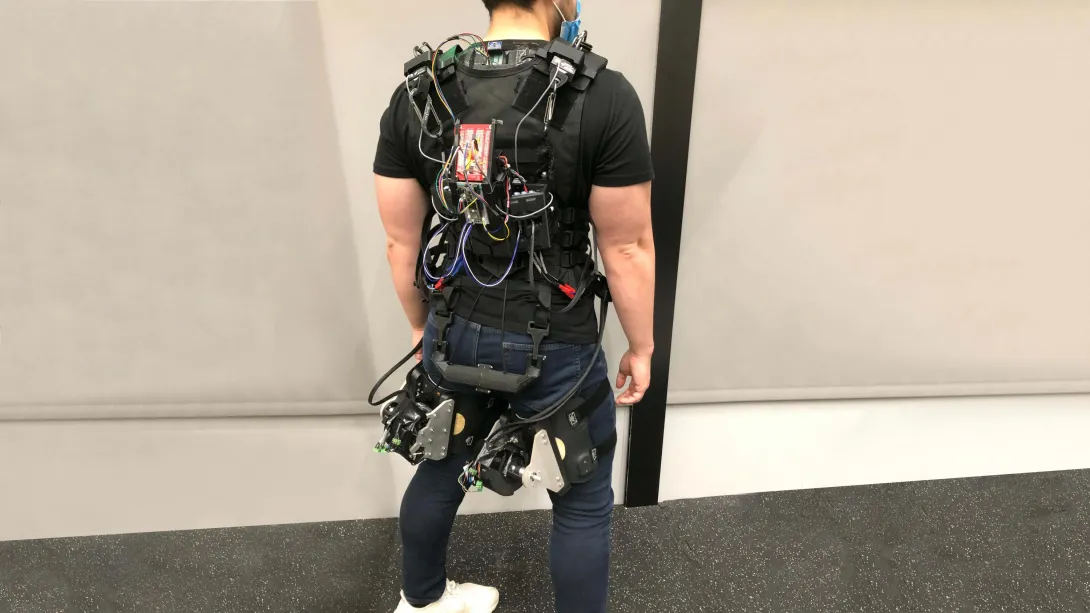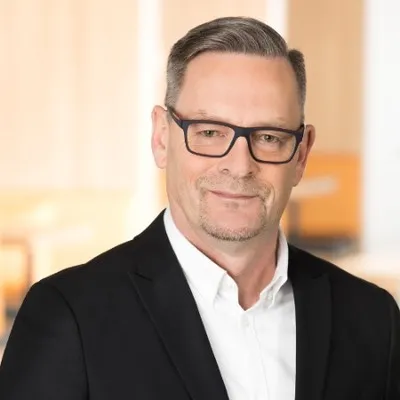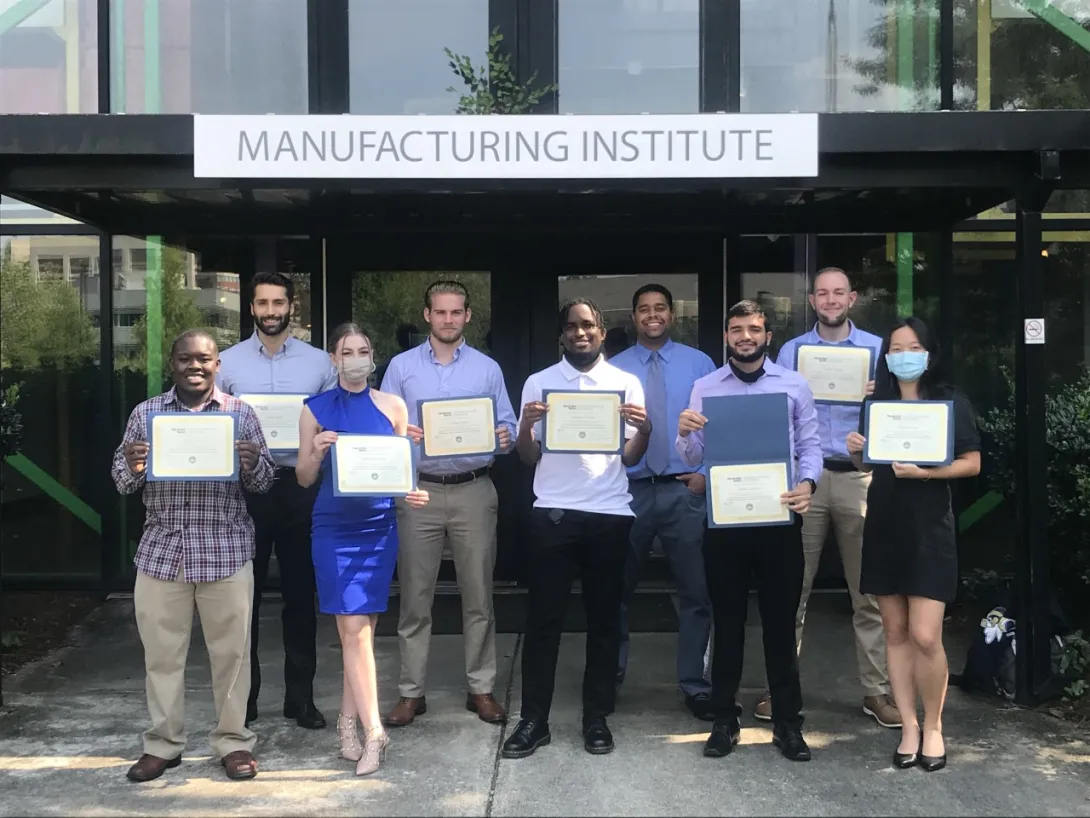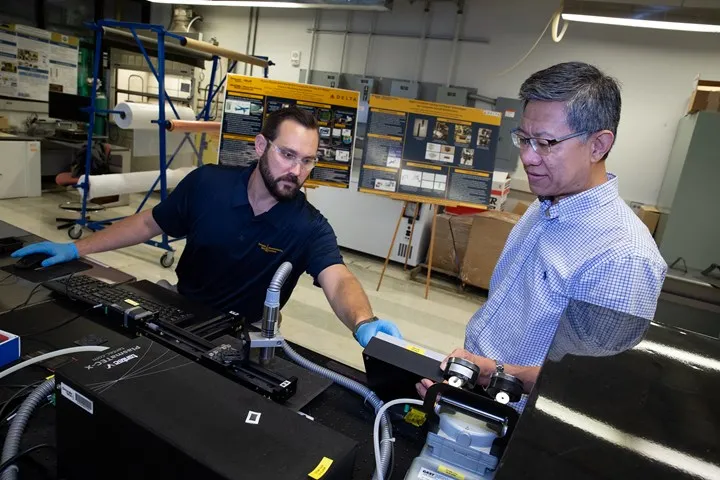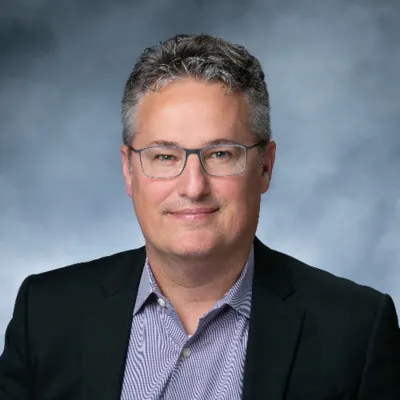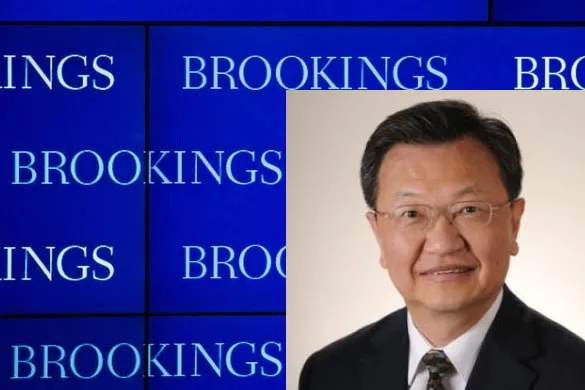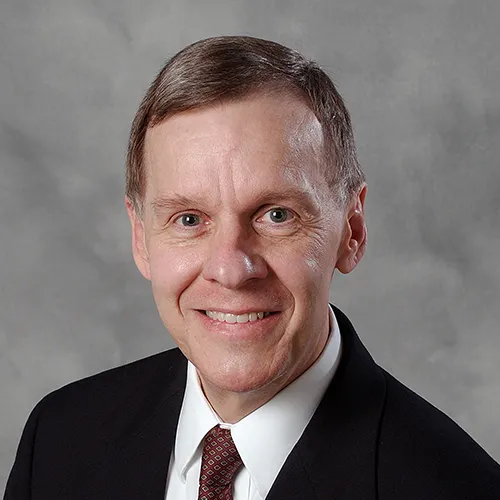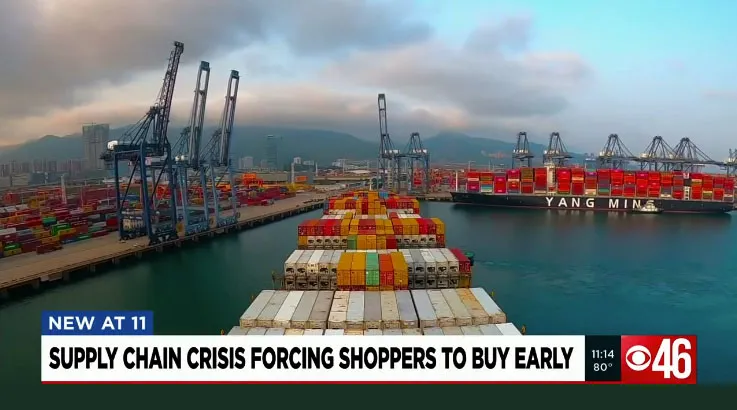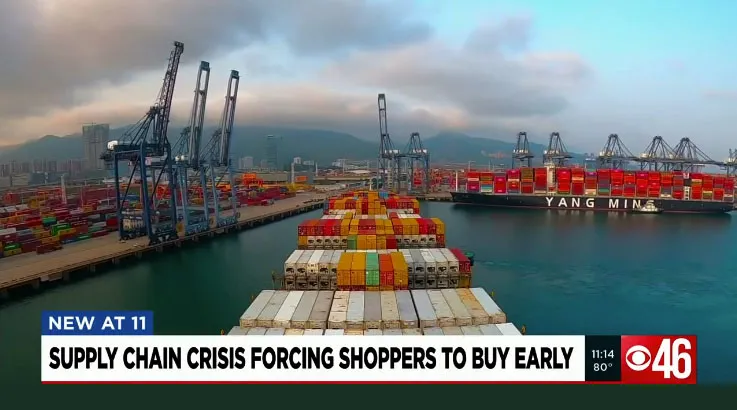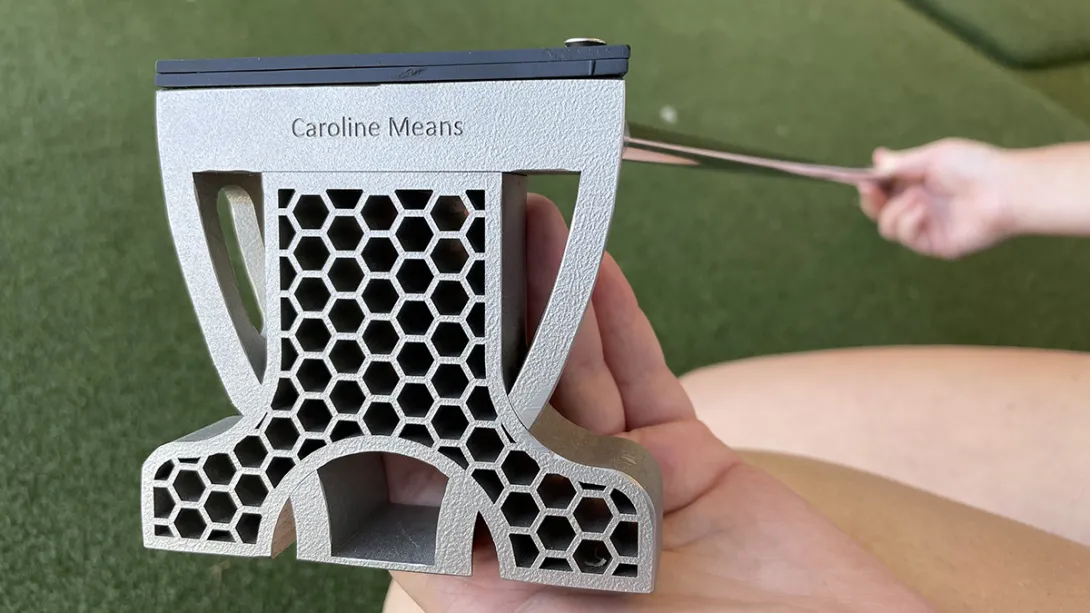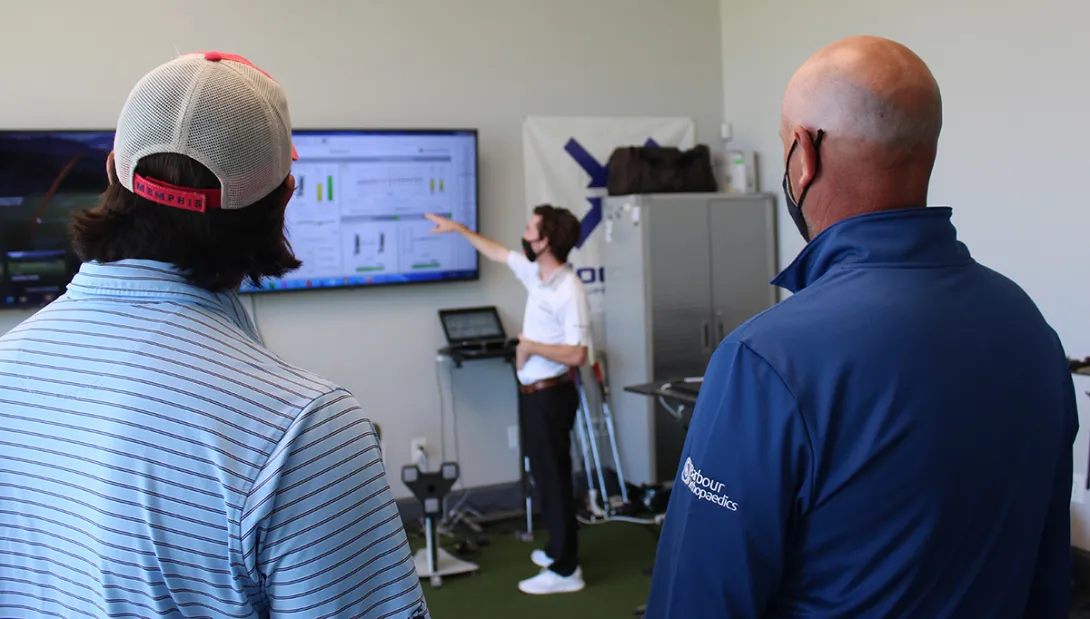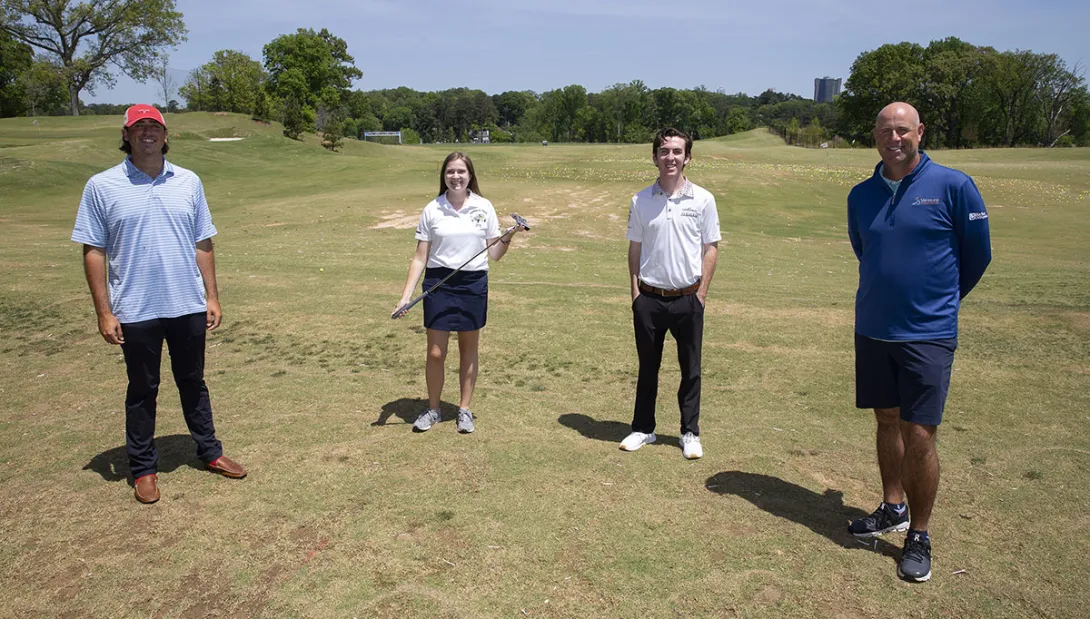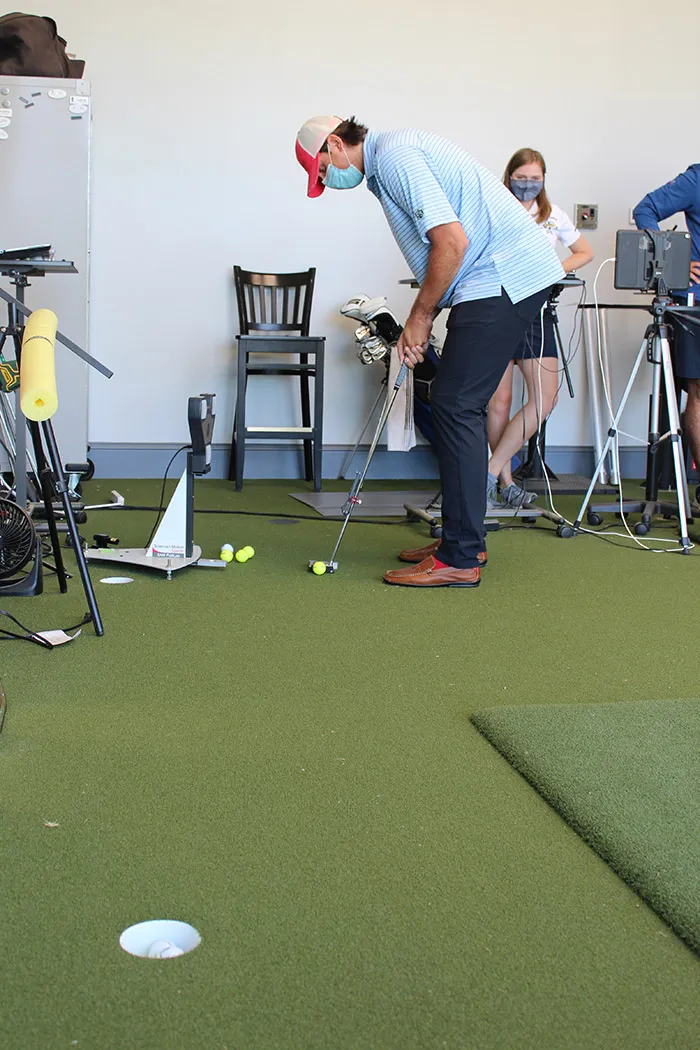Oct. 14, 2021
In the last few years, mechanically assistive exosuits, long depicted in works of popular science fiction and film, have finally started to see commercial deployment, according to Aaron Young, professor in the George W. Woodruff School of Mechanical Engineering at Georgia Tech. Most of these exosuits have a so-called passive design, assisting the wearer with unpowered elements like springs.
Active exosuits that incorporate electronics and powered motors are yet to be broadly applied. They tend to be big and heavy, and rely on rigid exoskeletons to transfer weight from body to ground. Exoskeletons add a great deal of stiffness, as well, Young said. Putting on most active exosuits is a little like becoming one with a forklift, restricting a wearer to lifting weights in a vertical plane.
For all these reasons, Young’s Asymmetric Back eXosuit (ABX) described in the October 5 issue of IEEE Transactions on Robotics is highly non-standard. There’s no exoskeleton, no rigid structure, nothing that makes contact with the floor. If the wearer is just standing there, it does nothing except for adding 14 pounds to their legs. But if they raise their body from a leaning over position, it makes a somewhat frantic noise: that is the sound of the ABX helping them rotate their torso, helping them twist.
Although most active exosuits support vertical lifts, rotating and twisting movements are also ubiquitous, especially in certain fields of manual labor like garbage collection and baggage handling. In many cases, these motions can be awkward and strenuous, leading to work-related injuries as well as back pain, according to Young. Back pain, in turn, is directly correlated with the strength of compressive forces and shear forces that are applied to the spine.
In designing their exosuit, the researchers sought a way to reduce these loads on the spinal joints. Putting it on looks a little like donning a futuristic backpack. Two motors are first strapped onto the back of each upper thigh. These motors are then connected to the back of the opposite shoulders, each with their own cable, making for two cables that diagonally overlap. The exosuit provides assistance by applying tension to the cables when it detects a wearer rise from a bending posture.
“It's definitely a different sensation than a sort of standard exoskeleton. It's not your standard design,” said Young.
Because the diagonal cables have a component of motion that is horizontal, they exert a pull on the torso that can aid in twisting it from side to side. In tests, the researchers showed that when a wearer of the ABX swung a weight from the ground to one side, the exosuit reduced their back muscle activations by an average of 16%, as measured by electromyography (EMG) sensors. The exosuit also provided a 37% reduction in back muscle exertion when a wearer lifted weights symmetrically, straight off the ground – an assistance level comparable to more rigid designs.
“People definitely felt like the technology is assisting them, which is great. And we did see the concurrent EMG reduction,” said Young. “I think it’s a great first step.”
In a sense, wearing the exosuit is almost like strapping two additional muscles onto the body – unconventional muscles, which run directly from back to leg. Interestingly, it is the positioning of these muscles rather than their brute strength that makes them functional, said Young.
The motors pull the cables with much less power than the muscles in the body. However, the cables are positioned much further away from the joints. Through this positioning, the cables obtain greater leverage and mechanical advantage, allowing the wearer to reduce their overall muscular output and hence the load that they place on their spine. (Spinal loading was not directly measured in the study.)
Aside from its overall performance, it is the flexible, asymmetric nature of the suit that really makes it unique, Young said. There are currently no other active exosuits that provide assistance for twisting and rotating through a comparable range of motion. While other exosuits also use cables, none have arranged them along diagonal lines.
Young is currently seeking collaborations with industry partners to further develop the exosuit. In future work, he sees its control system as a point to improve. Currently, when a person raises their torso from a lowered position, the cables simply pull with constant tension. But it should be possible to make the system detect different actions of the wearer and adjust its pull in response.
References
J. M. Li, D. D. Molinaro, A. S. King, A. Mazumdar and A. J. Young, "Design and Validation of a Cable-Driven Asymmetric Back Exosuit," in IEEE Transactions on Robotics, doi: 10.1109/TRO.2021.3112280.
About Georgia Tech
The Georgia Institute of Technology, or Georgia Tech, is a top 10 public research university developing leaders who advance technology and improve the human condition. The Institute offers business, computing, design, engineering, liberal arts, and sciences degrees. Its nearly 40,000 students representing 50 states and 149 countries, study at the main campus in Atlanta, at campuses in France and China, and through distance and online learning. As a leading technological university, Georgia Tech is an engine of economic development for Georgia, the Southeast, and the nation, conducting more than $1 billion in research annually for government, industry, and society.
News Contact
Mordechai Rorvig
Senior Science Writer
Georgia Institute of Technology
Oct. 11, 2021
Claude Bernier has been with South Shore Furniture since 1994 and currently serves as VP of Information Technology. South Shore Furniture, founded in 1940 and incorporated in Quebec, sells ready-to-assemble and fully assembled furniture in Canada, Mexico, and the United States. In 2005, South Shore began selling its products online and adopted the dropship business model. It now has two manufacturing plants in Quebec, Canada, one in Juarez, Mexico and three distribution centers in the United States. During his 27 years with South Shore, Claude has led two major transformations to support business growth and now is in charge of the organization's digital transformation.
Claude brings 37 years of experience and leadership in information technology, process automation, enterprise architecture, and software implementation. His expertise includes building and leading successful teams focused on results, improving business processes based on business strategy and long-term company vision and goals, and delivering value-added to internal and external customers. Prior to South Shore Furniture, Claude was an information technology consultant specializing in the wood and paper industry.
Mr. Bernier lives in Quebec City, Canada. When he his not working he enjoys hiking and camping in National Parks across North America.
The Georgia Tech Supply Chain and Logistics Institute is honored to have Claude join us to help determine SCL's future direction.
Sep. 02, 2021
A total of eight students, including three military veterans, graduated from the Research Experience for Student Veterans in Advanced Manufacturing and Entrepreneurship (REVAMP) 2021 summer program. This veteran-focused program is funded by the National Science Foundation (NSF) and hosted each summer by the Georgia Tech Manufacturing Institute (GTMI)--officially serving as a Research Experience for Undergraduates (REU) site for NSF.
The coordinator of this education and work force development (EWD) program is Billyde Brown, Ph.D., a senior research faculty and EWD director at GTMI. Brown's role is to create strong partnerships among industry, government, and academia in manufacturing research, development, and deployment, while acquiring and managing sponsored research programs.
Current and past students have performed fundamental research projects in advanced manufacturing topic areas such as additive and hybrid manufacturing, composite joining and repair, cell therapy manufacturing, robotic machining, integrated computational materials engineering, Internet of Things (IoT) sensors, and data analytics for adaptive manufacturing, and nanoscale 3D printing.
REVAMP’s major program activities include a seminar series on a broad array of manufacturing-related topics by Georgia Tech faculty and graduate students, external manufacturing plant tours (e.g. Kia Motors, Hyundai Mobis, Lockheed Martin, Textron Specialized Vehicles), experiential learning classes on the fundamentals of evidence-based entrepreneurship provided by Georgia Tech’s VentureLab and Advanced Technology Development Center (ATDC), a panel discussion from successful minority business enterprise clients of the Minority Business Development Agency (MBDA) Center in Atlanta, and three oral presentations delivered by students to demonstrate their research progress.
A new program element started in 2019 that offered a student veteran orientation, panel discussions, luncheon events, and tours of Georgia Tech Research Institute (GTRI) facilities both on the main campus and Marietta locations that were facilitated together with GTRI veteran faculty and the Georgia Tech Veterans Resource Center director. REVAMP is one of the premier REU programs in the nation for advanced manufacturing research and entrepreneurship training for undergraduate student veterans.
This year’s REVAMP-REU 10-week summer program was held from May 18 – July 24 at GTMI located on the Georgia Tech main campus. Students worked under the supervision of different faculty mentors to complete a research project centered on cutting-edge manufacturing science and technology. They also received entrepreneurship training by conducting customer discovery interviews to support a hypothetical product related to their research. As a bonus, eligible students received on-campus housing, $500 towards travel, and a $5,000 stipend.
Congratulations to these student graduates (in bold text) of the summer 2021 REVAMP-REU program and their faculty mentors:
Elizabeth Spahn
Faculty mentor: Tequila Harris, associate professor in the George W. Woodruff School of Mechanical Engineering
Project: “Formation of Gradient Thin Film using Scalable Coating Method”
Jabari Acre
Faculty mentor: Sourabh Saha, assistant professor in the George W. Woodruff School of Mechanical Engineering
Project: “Two Photon Additive Manufacturing”
Anthony Whylie
Faculty mentor: Aaron Stebner, associate professor in the George W. Woodruff School of Mechanical Engineering
Project: “Optimization of Process Parameters for Additively Manufacturing Nickel Titanium (NiTi)”
Pedro Alcolea
Faculty mentor: Krishnendu Roy, professor in the Wallace H. Coulter Department of Biomedical Engineering
Project: “Advanced Mesenchymal Stromal Cell Manufacturing
Allison Jung
Faculty mentor: Yan Wang, professor in the George W. Woodruff School of Mechanical Engineering
Project: “Optimization of 3D Printing Head
Jacob Totri
Faculty mentors: Keat Ghee Ong & Bob Guldberg, professors at the University of Oregon
Project 1: “Magnetoelastic Sensors for Real-Time Tracking of Cell Growth”
Faculty mentor: Chuck Zhang, professor in the H. Milton Stewart School of Industrial and Systems Engineering
Project 2: “Printed Sensors for In-situ Structural Health Monitoring of Composite Aircraft Structures”
Nathan Janda
Faculty mentor: Shreyes Melkote, professor in the George W. Woodruff School of Mechanical Engineering
Project: “Robotics and Hybrid Manufacturing”
Devon Phelps
Faculty mentor: Raghu Pucha, Ph.D., principal lecturer in the George W. Woodruff School of Mechanical Engineering
Project: “Modeling of Hybrid Composites with Nanofillers
More information about the Research Experience for Student Veterans in Advanced Manufacturing and Entrepreneurship (REVAMP) summer program can be found here.
News Contact
Walter Rich
Aug. 25, 2021
Based at the Georgia Institute of Technology (Atlanta), the Center for Composite and Hybrid Materials Interfacing (CHMI) intends to dramatically improve how composite and hybrid structures are joined and repaired. The Center is one of four active National Science Foundation (NSF) Industry/University Cooperative Research Centers (IUCRCs) at Georgia Tech. Funded for five years with an NSF IUCRC grant, the Center will reportedly work closely with an industry consortium of leading manufacturers and government organizations that will underwrite research projects.
Housed in the Georgia Tech Manufacturing Institute (GTMI), the Center incorporates three university research teams from Georgia Tech, Oakland University (Detroit, Mich., U.S.) and University of Tennessee, Knoxville (UT). Each research and development partner are said to bring decades of composite and hybrid materials research focus in specific industries: Georgia Tech in aerospace, Oakland University in automotive composite systems and UT in infrastructure and medical devices.
“The study of the interface between composite, metallic and other electronic materials is really the future of manufacturing,” says Ben Wang, executive director of GTMI. “The Center amplifies the thought leadership of Georgia Tech advancement in composites. It also puts us in the nexus of three areas: advanced manufacturing, innovative materials and data analytics.”
Center director Chuck Zhang, Harold E. Smalley Professor in Georgia Tech’s H. Milton Stewart School of Industrial and Systems Engineering (ISyE), will drive CHMI’s vision to transform the current labor-intensive, experience-based joining and repair practice into fast, automated and reliable processes.
“Using advanced computation, experimental, data analytics and digital techniques and tools, we hope to reduce by 50% the overall cost, cycle time and variation of these processes in the next 10 years,” Zhang says.
Read the full article in CompositesWorld, August 2021.
Complete article also posted at Georgia Tech - written by Anne Sargent
News Contact
Walter Rich
Aug. 17, 2021
Jason DeLoach has been with Americold since 2013 and currently serves as VP of Supply Chain Solutions. Americold is the largest publicly traded cold storage logistics company in the world with 242 facilities in 14 countries across 4 continents. During his 8 years with Americold, Jason has led the development of the Supply Chain Strategy, Design, and Development functions – as well as the comprehensive portfolio of Customer Supply Chain Solutions for Americold’s go-to-market strategy. With a cross-functional approach to customer value creation, Jason leads end-to-end supply chain solutions development for many of the largest food manufacturers and distributors in the world.
Jason brings 27 years of experience and leadership in Supply Chain Strategy, Analytics, Design, Engineering, and Implementation. Prior to Americold – Jason held strategic Supply Chain roles with Fortna, Ross Stores, and The Gap.
Jason lives in Roswell with his wife Shelley and his two children. When he’s not working, he enjoys boating on the lake and touring microbreweries.
The Georgia Tech Supply Chain and Logistics Institute is honored to have Jason join us to help determine SCL's future direction.
Jul. 30, 2021
From Washington D.C., the Brookings Institute recently convened a virtual panel of manufacturing experts that included Ben Wang, executive director of the Georgia Tech Manufacturing Institute. Wang holds the Gwaltney Chair in Manufacturing Systems and is a professor both in the H. Milton Stewart School of Industrial and Systems Engineering and the School of Materials Science and Engineering. He served as the previous chair of the National Materials and Manufacturing Board.
The panel’s topic: “Can the Biden Administration Improve the Manufacturing Sector?”
Other panelists included: David Cicilline, member of the U.S. House of Representatives; Monica Gorman, deputy assistant secretary, manufacturing industry & analysis, U.S. Department of Commerce; Elisabeth Reynolds, special assistant to the President for manufacturing and economic development, National Economic Council, the White House; Darrell West, vice president and director governance studies, the Brookings Institution; and John Hazen White, Jr., executive chairman, Taco Family of Companies Trustee, the Brookings Institution.
During the panel’s second session, Wang emphasized, “advanced manufacturing is foundational to our [nation’s] economic prosperity, resilience and the national security.” He was previously involved with President Obama administration’s advanced manufacturing partnership from 2011 to 2013.
“Building a strong manufacturing base in the U.S. is a national imperative,” said Wang. “We know that technology-based innovation is the dominant driver of economic growth in the 21st century. Our national security, standard of living, and rebuilding the middle class in our society all depends on a strong globally competitive manufacturing base.”
Wang stressed the need to have a vibrant innovation value chain tightly coupled with a strong manufacturing ecosystem. “We cannot separate innovation from manufacturing,” said Wang.
“Some policymakers believed that we could continue to innovate and leave manufacturing to other nations. As it turned out, not only did we lose our ability to produce high tech products, we began to lose our ability to innovate.”
“If we want to compete well globally, we must maintain both the technological innovation leadership and advance manufacturing leadership [in the United States],” said Wang.
The need was also stressed to support small and medium-sized manufacturers who contribute to the nation’s supply chain and overall GDP in a significant way, but lack resources to evaluate and adopt new, state of the art manufacturing technologies.
National and state Manufacturing Extension Partnerships (MEP) can play a critical role in helping these smaller entities with technology adoption.
According to Wang, regional ecosystem actors must work together to identify common manufacturing challenges and common opportunities. And then co-innovate around those common challenges and opportunities. This type of regional approach will push local companies to rethink how they should interact with one another and help ensure that benefits are shared by all.
Wang’s entire presentation and the full panel discussion which was sponsored and moderated by the Brookings Institution can be found here.
News Contact
Jul. 30, 2021
From Washington D.C., the Brookings Institute recently convened a virtual panel of manufacturing experts that included Ben Wang, executive director of the Georgia Tech Manufacturing Institute. Wang holds the Gwaltney Chair in Manufacturing Systems and is a professor both in the Stewart School of Industrial & Systems Engineering, and School of Materials Science and Engineering. He served as the previous chair of the National Materials and Manufacturing Board.
The panel’s topic: “Can the Biden Administration Improve the Manufacturing Sector?”
Other panelists included: David Cicilline, member of the U.S. House of Representatives; Monica Gorman, deputy assistant secretary, manufacturing industry & analysis, U.S. Department of Commerce; Elisabeth Reynolds, special assistant to the President for manufacturing and economic development, National Economic Council, the White House; Darrell West, vice president and director governance studies, the Brookings Institution; and John Hazen White, Jr., executive chairman, Taco Family of Companies Trustee, the Brookings Institution.
During the panel’s second session, Wang emphasized, “advanced manufacturing is foundational to our [nation’s] economic prosperity, resilience and the national security.” He was previously involved with President Obama administration’s advanced manufacturing partnership from 2011 to 2013.
“Building a strong manufacturing base in the U.S. is a national imperative,” said Wang. “We know that technology-based innovation is the dominant driver of economic growth in the 21st century. Our national security, standard of living, and rebuilding the middle class in our society all depends on a strong globally competitive manufacturing base.”
Wang stressed the need to have a vibrant innovation value chain tightly coupled with a strong manufacturing ecosystem. “We cannot separate innovation from manufacturing,” said Wang.
“Some policymakers believed that we could continue to innovate and leave manufacturing to other nations. As it turned out, not only did we lose our ability to produce high tech products, we began to lose our ability to innovate.”
“If we want to compete well globally, we must maintain both the technological innovation leadership and advance manufacturing leadership [in the United States],” said Wang.
The need was also stressed to support small and medium-sized manufacturers who contribute to the nation’s supply chain and overall GDP in a significant way, but lack resources to evaluate and adopt new, state of the art manufacturing technologies.
National and state Manufacturing Extension Partnerships (MEP) can play a critical role in helping these smaller entities with technology adoption.
According to Wang, regional ecosystem actors must work together to identify common manufacturing challenges and common opportunities. And then co-innovate around those common challenges and opportunities. This type of regional approach will push local companies to rethink how they should interact with one another and help ensure that benefits are shared by all.
Ben Wang’s entire presentation and the full panel discussion which was sponsored and moderated by the Brookings Institution can be found here.
News Contact
Walter Rich
Jul. 19, 2021
According to Chelsea White, professor in the Georgia Tech Manufacturing Institute, “supply chains don’t like disruptions—especially low-cost supply chains—and they’re all low cost.”
White is the Schneider National Chair in Transportation and Logistics and professor in the H. Milton Stewart School of Industrial and Systems Engineering at Georgia Tech.
“When demand is smooth and supply is balanced with demand, supply chains run well and inexpensively,” said White.
However, covid has caused dramatic drops and increases in demand, thus adding to supply disruptions. A rapid recovery in the United States has helped spike that dramatic increase.
In addition to dramatic demand flucuation, the supply side of this was also interrupted with shipping workers in China contracting covid, reducing the capacity to move goods out of major Chinese ports. With the dramatic rise in demand, congestion has been causing further delays even though the supply chains have plenty of capacity according to White.
White says some of this lack of smooth supply and demand is self-inflicted, “container ships have gotten much bigger, naturally causing surges all over the freight transportation system – ocean carriers, rail, and trucks. The tariffs kicking in caused ‘front loading,’ which we’re seeing now to ensure shelves will be stocked during the holidays at the end of the calendar year.”
“We’re finding out that the global freight transportation system is less resilient than originally thought,” said White. “My prediction for 2021 is there will be toys on the shelves for the Christmas holidays, but perhaps not as many toys and their prices may be higher.”
Chelsea White, along with other experts, were recently interviewed by CBS News in Atlanta, Georgia. You can view White’s interview and learn more about the supply chain crisis topic here: CBS46 News, Supply Chain Crisis Forcing Shoppers to Buy Early.
News Contact
Jul. 19, 2021
According to Chelsea White, professor in the Georgia Tech Manufacturing Institute, “supply chains don’t like disruptions—especially low-cost supply chains—and they’re all low cost.”
White is the Schneider National Chair in Transportation and Logistics, and professor in the H. Milton Stewart School of Industrial and Systems Engineering at Georgia Tech.
“When demand is smooth and supply is balanced with demand, supply chains run well and inexpensively,” said White.
However, covid has caused dramatic drops and increases in demand, thus adding to supply disruptions. A rapid recovery in the United States has helped spike that dramatic increase.
In addition to dramatic demand flucuation, the supply side of this was also interrupted with shipping workers in China contracting covid, reducing the capacity to move goods out of major Chinese ports. With the dramatic rise in demand, congestion has been causing further delays even though the supply chains have plenty of capacity according to White.
White says some of this lack of smooth supply and demand is self-inflicted, “container ships have gotten much bigger, naturally causing surges all over the freight transportation system – ocean carriers, rail, and trucks. The tariffs kicking in caused ‘front loading,’ which we’re seeing now to ensure shelves will be stocked during the holidays at the end of the calendar year.”
“We’re finding out that the global freight transportation system is less resilient than originally thought,” said White. “My prediction for 2021 is there will be toys on the shelves for the Christmas holidays, but perhaps not as many toys and their prices may be higher.”
Chelsea White, along with other experts, were recently interviewed by CBS News in Atlanta, Georgia. You can view White’s interview and learn more about the supply chain crisis topic here: CBS46 News, Supply Chain Crisis Forcing Shoppers to Buy Early.
News Contact
Walter Rich
Jul. 12, 2021
For many golfers, pros and weekend warriors alike, their trusty old putter can be like a reliable friend — comfortable, predictable, solid. The thought of changing it? Well, let’s not even go there.
Yet, an undergraduate in the Wallace H. Coulter Department of Biomedical Engineering at Georgia Tech and Emory University has been working on a project that could make it easier to experiment with putter characteristics. The project’s goal is to allow golfers to adjust parts of their club to find a better stroke, rather than having to buy a new club. It also could help equipment manufacturers reimagine their prototyping and design process.
For the last year and a half, Caroline Means has been designing a putter using an advanced metal-depositing 3D printer that is usually used to make aircraft parts. Working with Jud Ready, principal research engineer at the Georgia Tech Research Institute, the idea was to be able to adjust the putter’s key characteristics, toe hang and loft, and explore new kinds of face materials.
“We wanted to design a club that was able to be customized to a golfer in those three areas without having to get a new club or go to a professional and have them bend your club, and without significantly and permanently altering the structure or composition of the club,” said Means, a fourth-year student who has pursued the idea as part of a President’s Undergraduate Research Award at Tech. “There hasn't been as much innovation in the area of putter heads, and so, we decided to take on that challenge.”
The team’s prototype putter is made from stainless steel (eventually they’ll explore a multi-material composition), with an innovative shaft attachment method that allows for continuous adjustment of the toe hang. Its face inserts are made of either metal or a polymer created by Carbon, a California-based 3D-printing company. The inserts come in a variety of angles to adjust the club’s loft. They can be combined or stacked and easily removed via a unique attachment system Means and Ready created.
“The 3D printing in collaboration with mechanical engineering associate professor Chris Saldana gives us an advantage to create structures that could not be machined through traditional methods,” Means said. “That means that after it's been manufactured, a golfer can pick what face surface material they want for the putter. They can decide how many degrees of loft is best for the green conditions that day. As their swing changes and improves, they are able to adjust the toe hang of the golf club.”
Perhaps it’s worth pausing for a quick putter primer: Toe hang is a measure of the center of gravity of the putter, which affects how the clubhead moves during a stroke. The idea is to hit the ball with the putter’s face squared up, but every golfer’s stroke is different, and most rotate the face during their swing. Changing the toe hang can help the putter and the golfer’s swing work together for improved directional control of the ball.
Loft is the angle of the putter face when it rests on the green — usually just a degree or two. Too little loft, and the ball is pushed into the green when the putter hits it, slowing it down; too much, and the ball may hop at contact instead of rolling. All of that affects whether the ball reaches its intended target: the bottom of the cup.
To create their patent-pending design, Means and Ready contacted the golf pros at Atlanta’s historic Bobby Jones Golf Course. They also enlisted a pretty famous Georgia Tech alumnus who knows a thing or two about golf clubs.
“I come from a unique perspective on things like product development and innovation,” said Stewart Cink, a former Tech golfer and eight-time winner on the PGA Tour, including two wins in 2021. “I've got the on-course experience and knowledge, and I've been through a lot of product innovation with companies that I've worked with in the past. Jud had no way of knowing that it would be something that I would like really like, but this is part of my job that I really enjoy doing.”
After many months of design and a nearly day-long printing operation with the help of Saldana’s graduate students Elliott Jost and Jaime Berez in Tech’s Advanced Manufacturing Pilot Facility, Cink and his son Reagan tested the putter this summer at Bobby Jones Golf Course. The Cinks were hooked up to a system that collects mountains of data to help the pros at the course teach golfers about their stroke and where they can improve.
Cink said the adjustable putter could help golfers explore new putter configurations that might help their game without breaking the bond they have with their club.
“One of the biggest challenges with the pros and their putters is how to go from something that's really cozy and warm and comfortable to something that has a little bit different specs,” Cink said. “What their putter does is, it gives you the chance to take the old baby and change a little bit about it at a time. If you decide you want to go back to the other way, just change it back.”
So how does a biomedical engineering student end up elbows-deep in golf putter design?
Means met Ready when she took two of his courses, including Materials Science and Engineering of Sports.
“Caroline was a stand-out student,” said Ready, who also leads innovation initiatives at the Georgia Tech Institute for Materials. “She asked great questions, got good grades, had wonderful oral presentation and organizational skills — so I offered her a job after the semester was over.”
In the class, Ready’s class visited Georgia Tech’s Advanced Manufacturing Pilot Facility, where they learned about Saldana’s 3D printer that uses metal powder and lasers to build metal objects. Before long, Ready and Means were thinking about golf clubs and how they might be able to innovate while exploring the potential of the machine.
“My background in biomedical engineering really came in strong. We spend a lot a lot of time focused on learning how to put users at the center of the design process,” Means said. “I talked to professionals at Bobby Jones Golf Course to learn what makes a person come back to a putter. Our team wanted to know what kind of things they have to account for when they're fitting a club to someone, and how we can make this something that is unique and that people will want to use.”
This spring, Means and Ready were joined by Brittan Pero, a second-year student in mechanical engineering and an avid golfer who played for Oglethorpe University before transferring to Georgia Tech. He’s been helping with the testing, and he has secured his own President’s Undergraduate Research Award to continue the project.
“I've always wanted to design golf clubs, and I saw that Dr. Ready taught a class on engineering of sports equipment, so I figured I'd email him see if there was an internship or maybe undergrad research somewhere in the field,” Pero said. “It turned out that he had the exact field that I wanted to be in — putter design — which is crazy.”
While Pero works on refining the putter head to get it closer to a market-ready design, Means is off doing an internship this summer in pursuit of a career in medical device design. She said she hopes their testing data will show the idea is viable and they can create a small startup or even use some of their collaborators’ connections to club-makers to interest them in the concepts.
“Caroline will be back in the fall, and I expect the two of them to make even greater advancements as a team,” Ready said. “I can’t wait for Caroline’s patent to get fully prosecuted, and for Britt to file his own.”
Pagination
- Previous page
- 18 Page 18
- Next page
